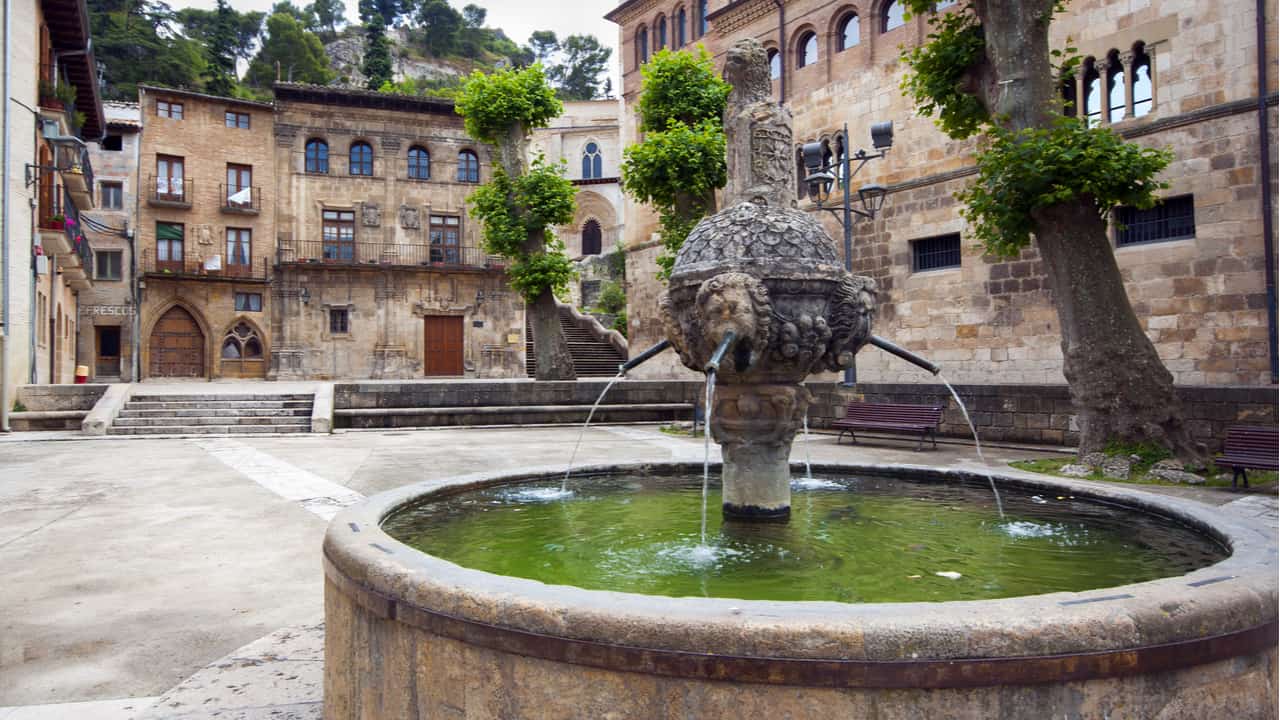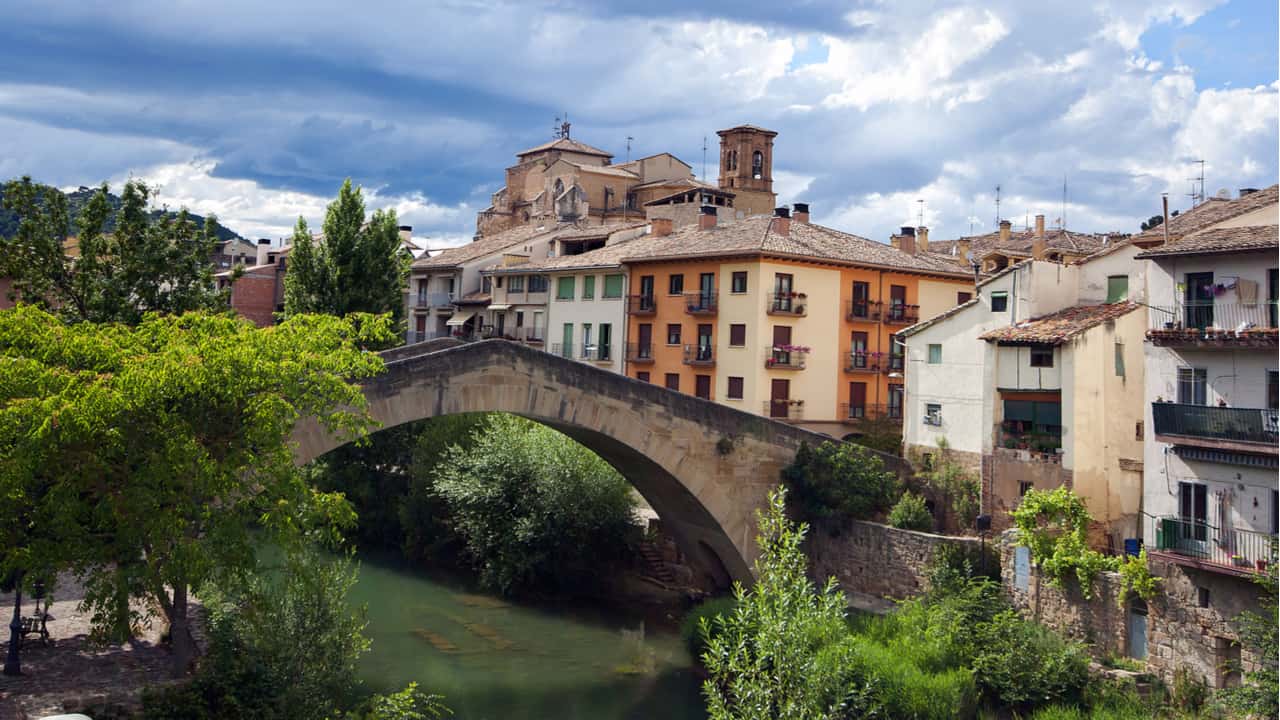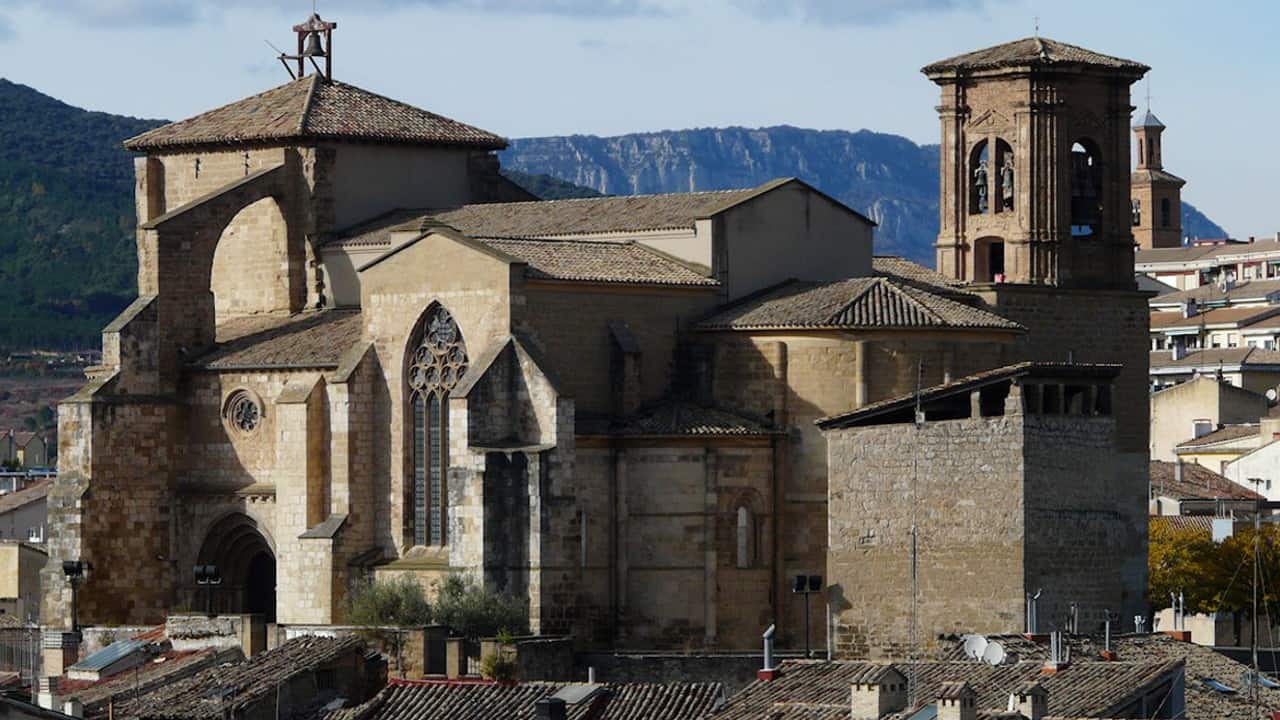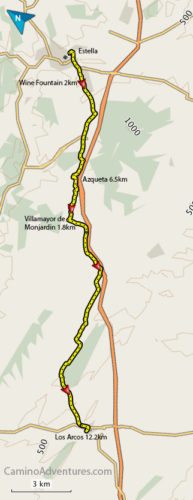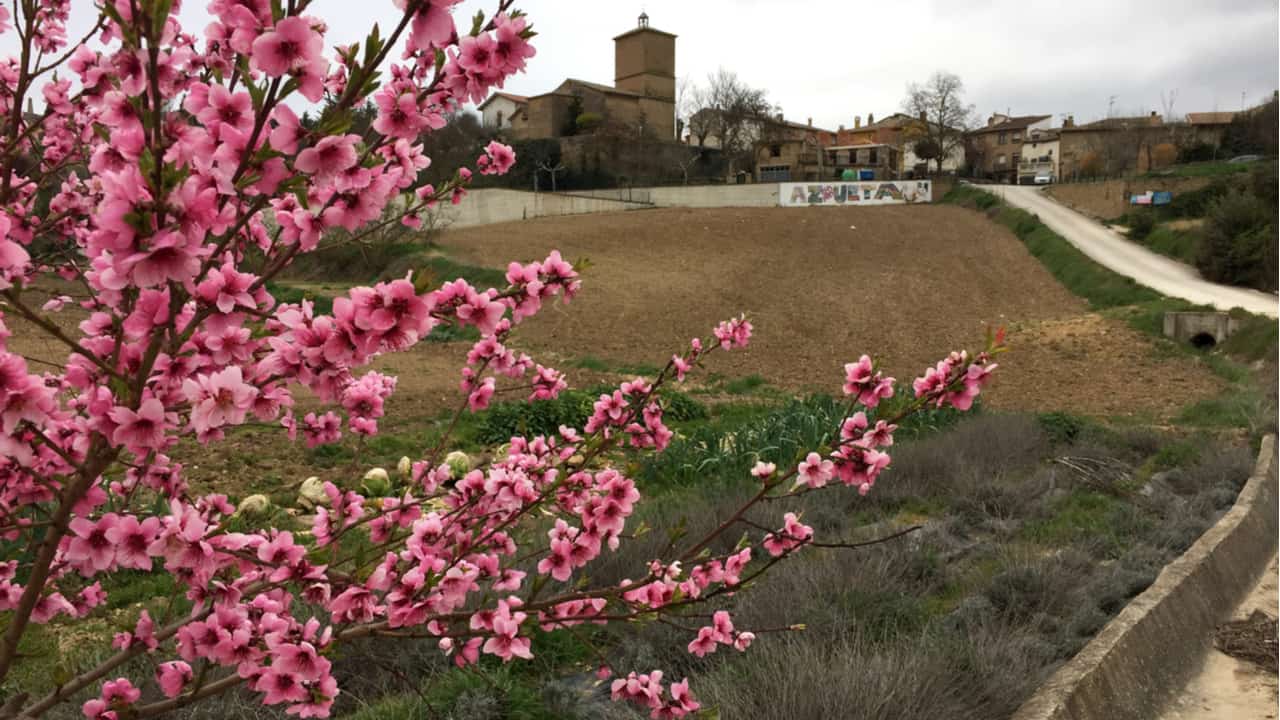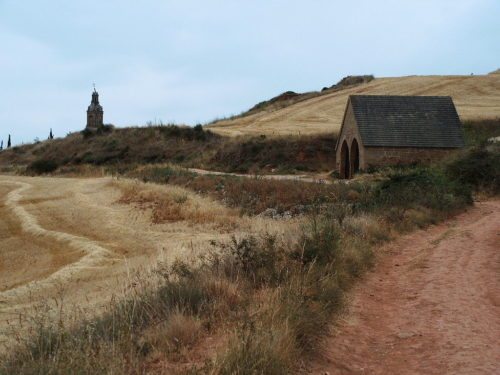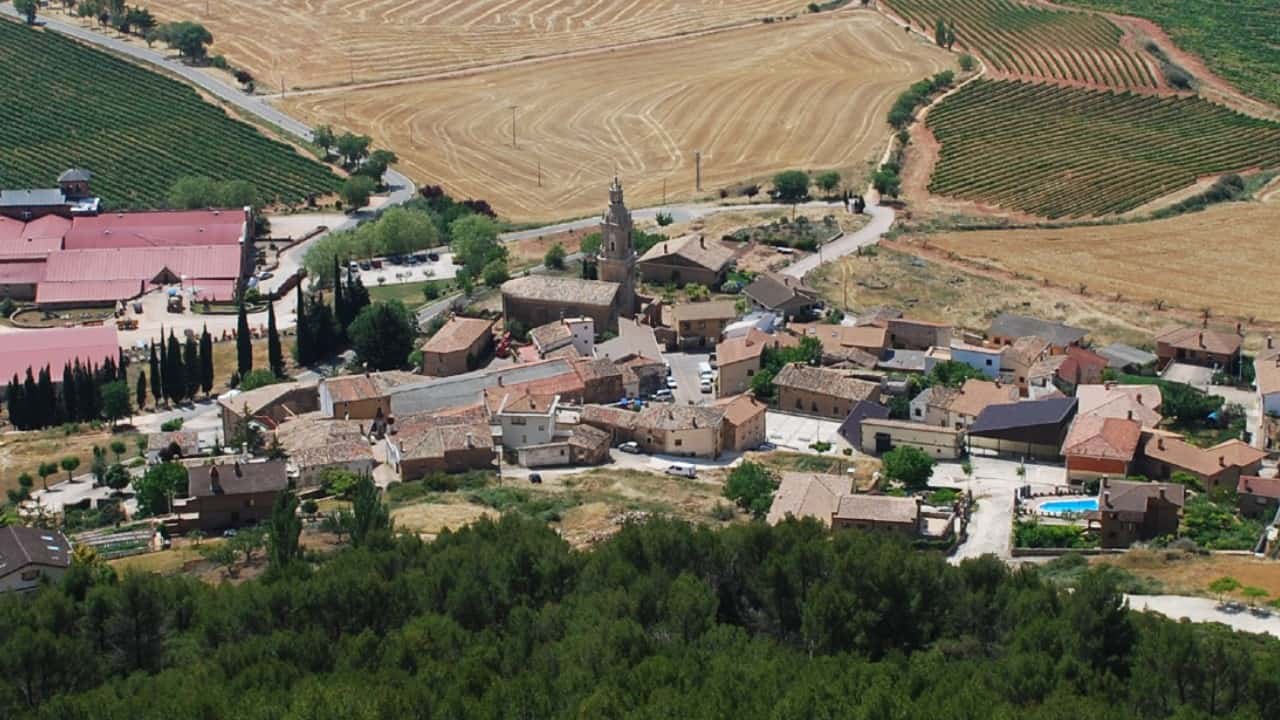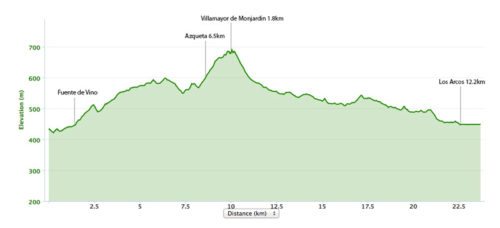Estella has a population of about 14,000, and many good restaurants and cafes are within 10 minutes walk of the Albergue. The town’s main square is Plaza de Los Fueros has many cafes and is a pleasant place to relax on weary feet and watch the world walk by.
Estella was a planned town built on the former village of Lizarra, (Basque for Ash due to the abundance of ash trees around the river Ega). One of the reasons for Estella being so interesting is the Camino route was changed slightly in 1090 by King Sancho Ramirez, who wanted to encourage settlement in the new town.
I have seen a few changes in the Camino Frances over the last 10 years, and sometimes, I can wish to walk the original route rather than accept the present. This illustrates to me how the Camino has always been an evolving path. Estella was granted a charter to encourage merchants from France to settle here.
The French district was initially on the left bank, where they were granted special privileges. This lasted until Sancho the Wise allowed the local Navarrese population the same privileges and allowed them to live among the French settlers during the 12th century.
Each district within the town had its own church and different groups, which led to fighting and separate hostels for pilgrims until, under Charles V, they were all merged into one.
Estella Irache Wine Fountain
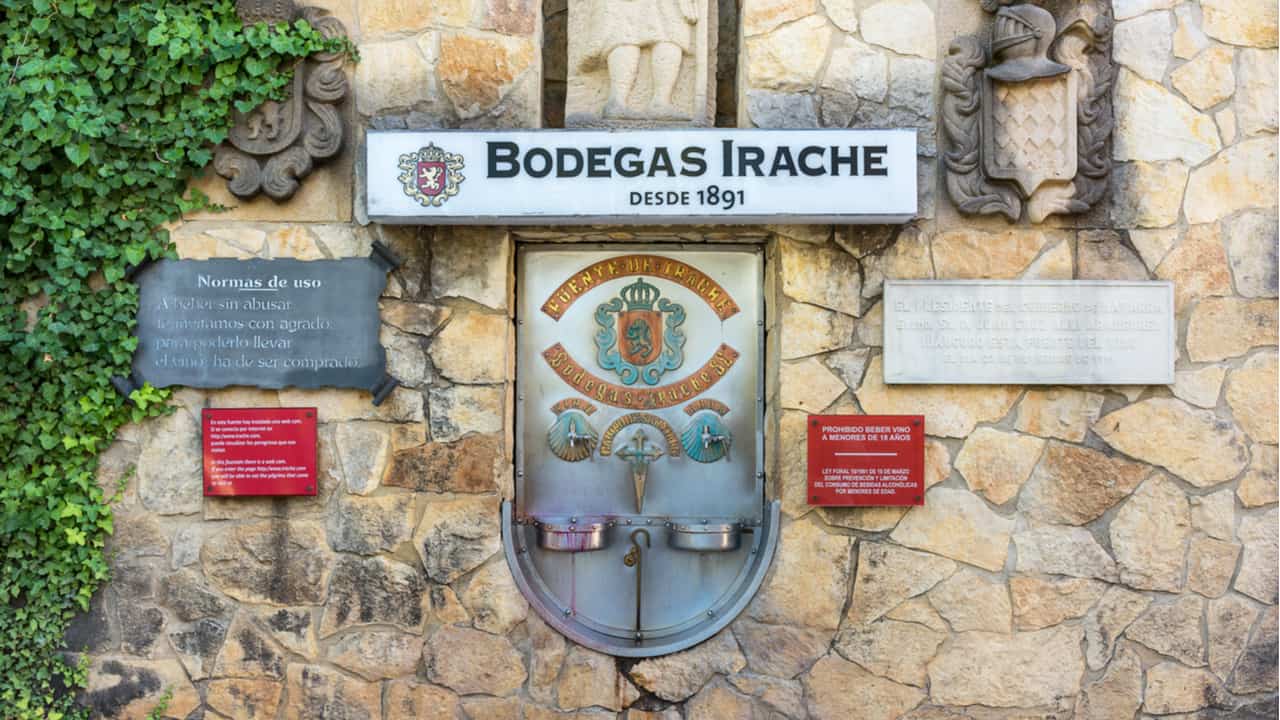
The Irache wine fountain is the most famous wine fountain on the Camino de Santiago. It is part of the ancient Monastery of Irache in Ayegui a suburb of Estelle. It is also one of the best-known wine fountains in Spain.
There are two fountains, built in 1991, which are known as the Wine Source and Source Irache, one dispenses wine and the other freshwater.
The fountain is gated and opens between 8 am and 8 pm daily. There are two signs at the fountain:
“We are pleased to invite you to drink in moderation. If you wish to take the wine with you, you will have to buy it.”
“Pilgrim, if you wish to arrive at Santiago full of strength and vitality, have a drink of this great wine and make a toast to happiness.”
See below for more information on the monastery that owns the fountain.
What to do and see in Estella
Estella, Spain, offers a variety of activities and sights for visitors to enjoy. Some popular options include:
- Exploring the medieval town center: Estella’s old town is home to several well-preserved medieval and Renaissance buildings, including the Gothic church of Santa Maria la Real and the Renaissance palace of los Reyes de Navarra. Visitors can also stroll along the charming cobblestone streets and admire the colorful facades of the town’s houses.
- Visiting the Parador de Estella: This 14th-century palace has been converted into a luxury hotel and offers visitors a glimpse into Estella’s rich history. The palace features a beautiful courtyard, a chapel, and several Gothic and Renaissance architectural elements.
- Walking the Way of St. James: Estella is located on the Camino de Santiago, a pilgrimage route that has been used for centuries by people from all over the world. Visitors can walk a section of the Camino and enjoy the beautiful scenery of the region.
- Enjoying the local cuisine and wines: Estella is located in the heart of Navarra’s wine country. Visitors can sample some of the local wines and enjoy traditional Basque and Navarran dishes at one of the town’s many restaurants.
- Visit the Museum of Navarra: The Museum of Navarra, is located in the Palace of the Kings of Navarra. The Museum has collections of archaeology, ethnography and fine arts.
- Take a walk in the Parque de la Ribera: The Parque de la Ribera is a large park situated along the banks of the Ega River, it is a great place to take a walk, relax and enjoy the beautiful scenery.
Santa Maria la Real
Santa Maria la Real is a Gothic church located in Estella. The church is considered one of the most important examples of Gothic architecture in the Navarra region and features a beautiful façade, a large nave, and several chapels.
The church’s interior is adorned with impressive stained glass windows, intricate stone carvings, and beautiful frescoes. Visitors to Santa Maria la Real can also admire the altarpiece, a masterpiece of Renaissance art.
The church has a museum located inside with a collection of paintings, sculptures, and other religious artifacts. It is open to visitors during the daytime and free to enter. It’s a must-see for anyone interested in Gothic architecture and art.
Renaissance palace of los Reyes de Navarra
The Renaissance palace of Los Reyes de Navarra, also known as the Palace of the Kings of Navarra, is a beautiful Renaissance-style building located in the town of Estella, Spain. The palace was built in the 16th century and served as the residence of the kings of Navarra.
It features a grand entrance, a beautiful courtyard, and several elegant rooms decorated with frescoes and other Renaissance-era artwork. The palace also has a chapel and several towers, including one that offers panoramic views of the town and the surrounding countryside. Visitors can admire the palace’s beautiful architecture and learn about its history and the story of the kings of Navarra.
The palace is now home to the Museum of Navarra. The palace is open to visitors during the day, and there is a small fee to enter. It’s a great place to learn about the history of Navarra and Renaissance art.
History of Estella
The early history of Estella, in many ways, reflects Europe as a whole. The town was formed but quickly divided itself into three distinct warring areas: San Pedro, San Juan, and San Miguel. Within the districts, the French and Jews lived apart from the native Navarrese.
Each district built walls against its neighbors. In the 12th century, the Jewish population was about 10%, one of the five largest in the Navarra region. By the tax census of 1366, the Jewish population had dropped to 3%, and most of the population had been massacred in the 1328 Navarra civil war.
As in the rest of Europe, relations between Christians and Jews oscillated wildly. Throughout Spain, in 1391, there were anti-Semitic riots which again largely destroyed much of the local population, and then in 1498, Jews were expelled from Spain. Many did not leave but converted to Christianity.
This has echoes in the 21st century when a Spanish village, Castrillo Matajudios, made the news as they wanted to rename their town. The village is further along the Camino, nearer Burgos. Castrillo Matajudios translates to “Camp Kill Jews.” On top of local, regional, and national wars, Estella coped with the black plague decimating the population in 1348, 1362, 1380, 1400, and 1420.
For such a small compact town, Estella has an overwhelming number of sights to see built due to the Camino passing through the town. There is a Tourist Office on Plaza San Martin, 200 meters from the main Albergue. They can supply a map of the town.
Next to the tourist office is the 12th-century Palace of the Kings. It was built by Sancho el Sabio and is an excellent example of Romanesque civil architecture built in the style of the palaces in the French Benedictine area of Cluny. Although it was built as a palace, no records suggest any monarchs lived here.
Originally the building had one floor, later, additional floors were added however they have been completed in a way that creates a harmonious facade. Look up at the capitals to see the palace’s beauty (capitals are the tops of columns where they meet the load they carry, often ornamental and spread out from the column).
One capital has three deadly sins. It illustrates sloth using musicians as they distract one from piety or duty with their secular seductive power. However, the most important capital at the time was Roland fighting with the Muslim Ferragut. The building is now a museum and art gallery.
The Church of San Pedro de la Rua is a 12th-century fortified Romanesque church located in the original French area. Within the church is a fragment of the True Cross and a bone of San Andres. Legend says that Greek pilgrims became ill and died in the Hospice of San Nicolas, and when he was buried in the cloister, the grave glowed.
When the grave was opened, the clerics found the fragment of the True Cross, the bone of St Andrew, and the pilgrim’s crosier and gloves – this revealed that he was not an ordinary pilgrim but the bishop of Patras.
Only two of the four sides of the cloister remain, however, they are works of art. The Romanesque capitals are highly decorated and worth seeing, each capital depicts four scenes or episodes from a story. Interestingly St Andrew is featured in eight scenes 100 years before the above bishop brought his shoulder bone to Estella.
Wealthy merchants built the Church of Santo Sepulcro for the French community before 1123. The church’s founding is a typical medieval anti-Semitic legend where a spiteful Jew threw a cross into the river and stopped here and could not be moved to any other place. The cross has since agreed to be housed in the Church of San Pedro de la Rua above.
The Church of San Miguel, half church, half castle, controls the eastern approaches to Estella. St Michael is the Archangel who leads the heavenly armies against the devil’s armies. Therefore most churches dedicated to him are fortress churches protecting a town.
Estella to Los Arcos Camino Frances
This day is 23 km and not too hard – unless you end up walking in the mid-day sun in July or Aug – that should really be avoided.
This is day 6 on the French Way, if you are following the guidebooks, and will find you sleeping overnight in Los Arcos. When I last stayed in the main hostel in Estella, they served breakfast – not something you will get at many albergues.
It was coffee, tea, and bread with jams, enough to get me going and miss the early cafes in Estella and continue to Villamayor de Monjardin before stopping for something to eat and drink, about 8km.
There are two routes leaving Estella, the main one, which stays on the right-hand side of the N111, and the other, which is not so well signposted on the left-hand side of the same road. Cross the road and walk the second route to see one of this day’s most talked about sights – the wine fountain.
Both paths join again just before Azquata and head uphill to the highest point of the day at Villamayor de Monjardin. Eat or buy some food here and fill up with water as it is 12 km to Los Arcos without any more village stops and only one not very appealing fountain for water along the rest of the route.
The elevation starts at about 400 meters and reaches its height at Monjardin, around 650 meters. From here to Los Arcos, you will be walking along gravel tracks that are surrounded by vineyards and farmland. There are great views down along long sloping tracks, which make the latter half of the day easy on the eyes and the feet.
The main Albergue in Los Arcos is on the far side of the town. It is big and comfortable but can be noisy from outside at night. In Los Arcos, I ran with the bulls during a fiesta, it was an invigorating experience, make of that what you will.
It is 2 km from Estella to the wine fountain.
Albergue San Cipriano, municipal, 3 Calle Polideportivo, €6, 80 beds, B€3, M€9, W€3, D€3, @, Bike, Tel: 948 554 311, Open all year.
A short distance further on the left is the Monastery of Santa Maria la Real de Irache. It was founded in the 10th Century and vacated in 1985 because of the lack of Novitates, the earliest records of the monastery date from 958.
A pilgrim’s hostel was founded in the monastery in 1054 by Don Garcia de Najera. In 1060 King Sancho el de Penalen gifted the town to the monastery; the town’s inhabitants then paid taxes in wine, wheat, and labor.
The monastery achieved great grandeur in the 11th century under Saint Veremundus, who greatly increased its wealth and prestige. A Romanesque church was started in the late 12th century and completed in the early 13th century. The church contains a 14th-century Virgin del Rosario and a French Gothic crucifix.
The monastery began declining from the 13th to the 15 century. A new Benedictine community from Valladolid established a school in 1522. Later, in 1605 the Benedictine university in Sahagun was transferred to Irache, where it continued to grant degrees in theology, philosophy, medicine, and canon law, until the early 19th century.
Today it is worth stopping to see the exceptionally well-preserved cloisters and the church. However, many visitors will be there to visit the Wine Museum or the Bodega.
Azqueta
6.5 km, bar with 24 hr vending
There are reports of a small 9-person albergues in the village. It is said that the town was given to a knight in 1128, who had caught thieves who had stolen treasure from the monastery at Irache.
However, by 1346 the village was owned by the church in Pamplona. It is a small village that you will pass through in two minutes unless you stop to see the 16th-century church of San Pedro. The church tower is 20th century. However, the rest of the building is a mix of Gothic and Romanesque.
Interestingly the 17th-century sculptor appears to have used the angel of the Annunciation as an opportunity to study the naked human form.
Just before Villamayor de Monjardin, there is an unusual 13th-century Gothic Fountain of the Moors. Some steps lead down internally to the water level. The fountain was restored in 1991.
Villamayor de Montjardín
1.8km, Water, cafe, shop
After Villamayor, the highest point of the day, there are no villages, food, or water until Los Arcos, therefore, stock up before leaving. It is a pleasant 12km through open countryside with little shade to Los Arcos, there is a fountain along the route, but the water is not drinkable.
Still, a few kilometers out from Villamayor de Monjardin, the skyline is dominated by the 17th-century Baroque tower from the Church of San Andres. The church is a 12th-century Romanesque construction with a barrel-vaulted roof and semi-circular apse.
One of the capitals on the south side illustrates a combat scene of Roland fighting Ferragut. The most valuable of the church’s treasures is the 12th-century silver Romanesque processional cross.
On top of the hill is the ruined castle of San Esteban de Deyo (St Stephen). The castle base is roman. However, the castle itself has been reconstructed after each of the many conquests it fell to.
It was the last major Moor stronghold in the area until it fell in 914 and was captured by King Sancho Garcia. In Pseudo-Turpin tales, Charlemagne supposedly captured the castle. This is thought to be french propaganda to stir interest in Iberia.
However, an interesting tale emerges from this story: Charlemagne, before marching his troops into battle the next day, asked God to indicate which of his troops would not survive.
As the troops put on their armor on the morning of the battle, 150 men were marked on their backs. These troops were told to stay back and guard the camp, however, after the battle, when Charlemagne returned, the 150 had mysteriously died (Perhaps a message to Charlemagne not to out-think God).
The next stop on the route, Los Acros, is 12.2 km down the road.

I love hiking, backpacking, and camping. From the Camino de Santiago to the West Highland Way in Scotland or simply a great day hike on the weekend. Hiking refreshes me, my mind, and keeps my body reasonably fit. So far I have walked three Camino routes and many other long distance hikes in the UK, Canada, and around the rest of Europe. One of the best was my hike up Ben Nevis.

